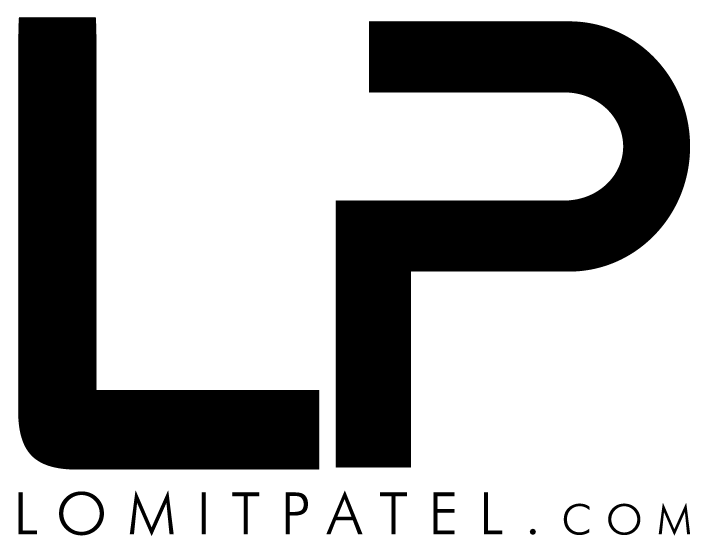A business plan template for small business is your roadmap to success. It’s essential whether you’re starting up or scaling. A plan helps you consider every detail, from target market to funding programs and financials.
This post covers creating a killer business plan. We’ll discuss its importance, even if you aren’t seeking investment capital. My experience helping small businesses succeed informs this practical advice. More on that later—let’s dive in.
Table of Contents:
- Why Every Small Business Needs a Plan
- Key Components of a Business Plan Template for Small Business
- Example: Building a Business Plan Template for a Food Truck
- Conclusion
Why Every Small Business Needs a Plan
A business plan is more than just a document for investors. It’s a living guide that keeps you focused on your mission and business development. It helps you find opportunities in your niche and anticipate challenges. It also helps you pay taxes and stay legally compliant.
Creating a simple business plan also:
- Highlights hidden opportunities so you can quickly pivot.
- Keeps you in tune with your target market.
- Optimizes your operations for peak performance.
- Keeps your team aligned with your business location goals.
A business plan can also assure investors, customers, and employees of your profitability. A business bank account and business credit can help show fiscal responsibility. It can act as your roadmap for growth and may be necessary if you’re using business loans to improve profits. Understanding the specific rules for your business structure is also critical for success.
Key Components of a Business Plan Template for Small Business
This section covers the most important parts of a business plan template for small business. A well-defined business plan helps launch your business, manage employees, buy assets, and acquire businesses.
Executive Summary
This is your business’s elevator pitch, written last but placed first. This crucial first impression should keep investors engaged. Focus on what makes your business special, not just what you do. A one-page business plan can sometimes be appropriate for an executive summary.
Address key aspects such as: your product/service and its target market; how you generate revenue and the overall direction of your small business; and your competitive advantage. Understanding and following business regulations is vital.
Company Description
Provide essential facts about your company and leadership. This includes how you solve a specific business problem. Explain what your company does and provide insights into your operations. A traditional business plan is generally comprehensive, offering details on your team, mission, and structure.
Specify your company’s structure (partnership, proprietorship, LLC, etc.). This builds trust with stakeholders (employees, clients, investors) by demonstrating compliance. See Whitehouse.gov and USA.gov for additional business guides and regulations. Women-owned businesses, veteran-owned businesses, minority-owned businesses, LGBTQ-owned businesses, military spouse businesses, and American-owned businesses might qualify for specific government programs. Native American-owned businesses and rural businesses can access resources from specific federal and state assistance programs.
Products and Services
Detail your product offerings. Explain your pricing structure, lifecycle stage, and planned enhancements. Manufacturing based companies can check out Business Plans Handbook 2024 for specific guidance. Be clear about what makes your offerings better than competitors.
Market Analysis
Show why now is the time to invest. Provide a traditional business plan analysis that demonstrates your market understanding. Support your claims with research on competitor share, demographics, pricing, and your competitive strategy.
Address the size of the market and projected growth. Highlight who your ideal customers are and why your products or services appeal to them. Use market research to determine potential opportunities and the demand for your product. Understanding your target market within this context makes sure you know where you fit.
Marketing Plan
Detail your social media (PPC), SEO content strategies, email list building, and how you will stay legally compliant. Discuss your team, paid partnerships, and promotional plans. Focus on engagement, lead nurturing, and customer retention. Consider advertising, public relations, and other marketing initiatives that might work for your business and your specific products or services. Explain your methods for establishing business credit and securing funding if needed.
Outline how you will reach your target market. Define clear and achievable marketing goals, while being realistic about what you can accomplish given your budget and resources. Include key metrics you will track to measure success, along with ways to pivot if needed based on results.
Financial Projections
Project your financials, even for existing businesses. Use existing data to extrapolate balance sheets and other business plan essentials, including operating expenses, sales costs, startup costs, and business insurance. Whether you’re a new venture or existing business, projecting revenue and expenses is important for investors and overall planning. Understanding funding programs can also aid your development and future growth. You can explore some resources like a business plan template for small business on gov websites if you are trying to win federal contracts.
Detail anticipated cash flow, outlining inflows and outflows to demonstrate your company’s anticipated financial trajectory. Incorporate a break-even analysis showing when your business is expected to become profitable. Present realistic estimations for the first few years of operation, using relevant data and considering market trends and growth. Don’t inflate projections; present data responsibly and credibly.
Be prepared to address any challenges you foresee and demonstrate contingency plans. Explore various disaster assistance options such as disaster loans for physical damage and economic injury. For additional guidance and relief options for a business federal disaster, visit the SBA Disaster Loan Assistance website and lender match programs.
Example: Building a Business Plan Template for a Food Truck
Learning by example is often the best approach. Here’s how a business plan template would work for a food truck. We’ll call it “The Hungry Robot.” This simple business plan example can be adjusted based on your industry. This plan will help them manage employees and ensure profitability through tools such as payroll software.
Executive Summary
The Hungry Robot offers city dwellers gourmet, locally-sourced burgers with unique flavors. Free sample business plans can help simplify financials. We’ll thrive by using strategic social media and targeting relevant bloggers for word-of-mouth marketing, aiming for profitability within six months.
Company Description
Founded by a passionate foodie (me.), The Hungry Robot escapes the ordinary. We look for practical, meaningful steps, not just checklist items. This will serve as a primary navigation for achieving business goals, not only helping manage existing profits, but also generating profits.
Products and Services
Our gourmet burgers are amazing: juicy patties, fresh buns, farm-fresh veggies, and creative sauces. We’ll also offer hot soup and local, fair-trade coffee in colder months. Resources like Business Plans Handbook 2024 offer additional insights. The Hungry Robot could explore exporting its products and registering to become a federal contractor to generate revenue from federal contracting.
Market Analysis
Office workers overspend on takeout, and existing food carts lack quality. We target discerning palates who crave a unique lunch. Our offerings cater to both downtown professionals and casual eaters, so demand should remain strong. For spouse businesses looking to expand, thorough competitive analysis and accurate identification of your target audience within the market segment are crucial for establishing your market share and developing focused strategies.
Marketing Plan
We’ll leverage Instagram and PPC ads to target downtown lunch spots with “lunchtime takeovers.” Our plan will incorporate content strategies for secure websites that promote the food truck’s business while being mindful of legal and compliance aspects.
Financial Projections
We project breaking even within a few months using our business plan. We forecast a 20% sales increase post-launch. The business model canvas aids in visualizing growth, considering economic cycles, and minimizing investment. Using the business model canvas will also ensure financial decisions are thoroughly evaluated. Understanding the economic impacts and having potential disaster relief options in mind is important when starting a small business.
Conclusion
This business plan template for small business is adaptable to your specific needs. A business plan is crucial for success, whether or not you’re seeking funding or are already established. A business plan isn’t a one-time document; it guides daily activities and growth. Remember, planning your approach to business isn’t just for start-ups; businesses like The Hungry Robot need clear direction.
Consistent updates to the plan based on performance and goals allow for agile adaptations as market conditions shift. Understanding contracting assistance available for veteran-owned, women-owned, minority-owned businesses, and those located in rural areas will greatly aid business development and growth potential. Use the SBIC directory to locate nearby investment funds.
Subscribe to my LEAN 360 newsletter to learn more about startup insights.





